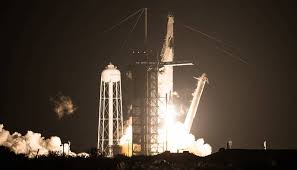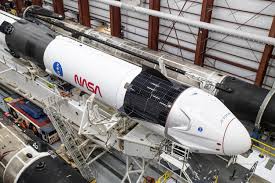
The 2020s have marked a remarkable shift in humanity’s journey beyond Earth. By 2025, space travel is no longer the exclusive domain of governments—it’s a thriving frontier for commercial companies, led by pioneering players like SpaceX and supported by NASA’s evolving partnerships. Together, they are opening a new era where space is more accessible, innovative, and ambitious than ever before.
From reusable rockets to lunar missions and space tourism, the landscape of space exploration is rapidly transforming. So, what does this new era of commercial space travel look like? How are SpaceX and NASA shaping its future? Let’s dive into the exciting developments redefining our place in the cosmos.
1. The Rise of Commercial Spaceflight
For decades, NASA and other national agencies were the only organizations capable of launching humans and cargo into space. But the last ten years have seen a dramatic change:
- SpaceX, founded by Elon Musk, revolutionized spaceflight with its Falcon 9 reusable rocket, dramatically lowering launch costs.
- NASA began partnering with private companies through programs like Commercial Crew and Commercial Cargo, outsourcing missions that once were fully government-run.
- Other companies like Blue Origin, Boeing, and Virgin Galactic have entered the race, pushing innovation and competition.
This shift has accelerated space access and fostered a vibrant commercial ecosystem.
2. Reusability: Changing the Economics of Space
One of SpaceX’s biggest breakthroughs has been rocket reusability. Instead of discarding rockets after one flight, SpaceX developed technology to land and refurbish boosters for multiple launches.
This innovation:
- Cuts launch costs by up to 70%
- Enables more frequent flights
- Opens opportunities for new industries, from satellite internet to space manufacturing
NASA has embraced this trend, supporting reusable spacecraft and vehicles to improve sustainability and efficiency.
3. NASA’s Artemis Program and Lunar Ambitions
NASA’s Artemis program aims to return humans to the Moon by the mid-2020s—this time with the goal of establishing a sustainable human presence.
Key aspects include:
- Using commercial partners like SpaceX to deliver cargo and crew to lunar orbit and surface.
- Developing the Lunar Gateway, a space station orbiting the Moon for research and staging future missions.
- Preparing for eventual human missions to Mars, building on lessons learned from Artemis.
This public-private collaboration marks a new model for deep space exploration.
4. Space Tourism Takes Off
Commercial space travel isn’t just for astronauts anymore. Companies like SpaceX and Virgin Galactic have started space tourism flights, offering civilians the chance to experience microgravity and see Earth from orbit.
By 2025:
- Space tourism has expanded with more frequent suborbital and orbital trips.
- New companies and partnerships aim to make space travel safer and more affordable.
- Research into long-duration commercial stays in orbit and lunar hotels is underway.
Space tourism is transforming space from a distant dream into a new leisure frontier.
5. Satellite Mega-Constellations and Global Connectivity
SpaceX’s Starlink project is deploying thousands of small satellites to provide high-speed internet worldwide, especially in underserved areas.
This initiative:
- Improves global internet access and bridges the digital divide.
- Supports disaster relief communications.
- Demonstrates how commercial space ventures can impact life on Earth.
NASA and other agencies monitor these mega-constellations to balance innovation with space traffic management.
6. Challenges and the Path Forward
Despite tremendous progress, commercial space travel faces hurdles:
- Safety standards must keep pace with rapid innovation.
- Space debris management is critical as more satellites launch.
- Regulatory frameworks are evolving to govern commercial activities beyond Earth.
- The high cost of space access remains a barrier for many potential participants.
Continued collaboration between government, private companies, and international partners will be essential.
Final Thoughts
SpaceX, NASA, and their commercial partners are ushering in a new era where space is more open, dynamic, and inclusive. The days of government-only missions are giving way to a diverse ecosystem of explorers, entrepreneurs, tourists, and researchers.
As technology advances and partnerships deepen, humanity’s future in space looks brighter—and closer—than ever before.
